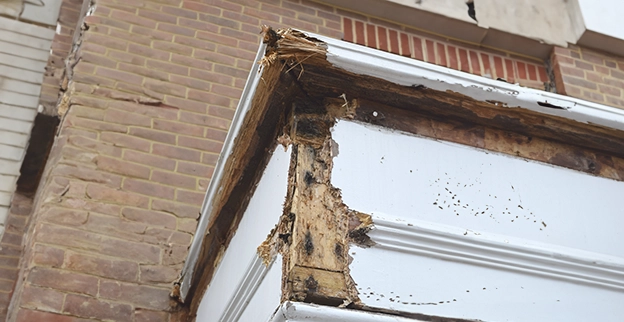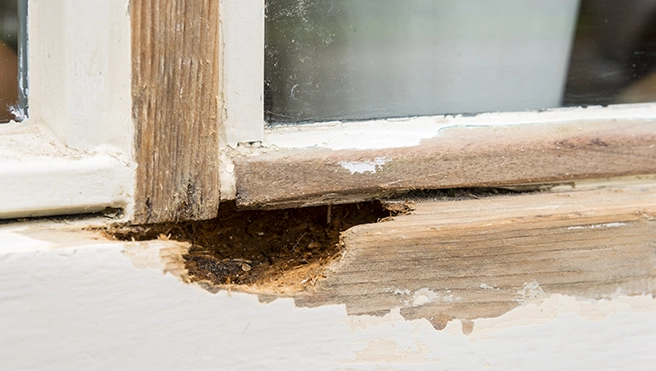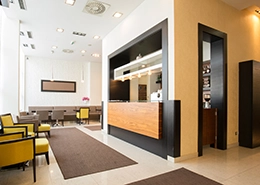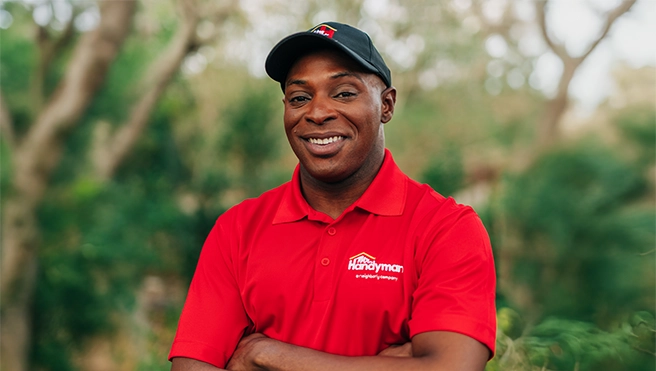Wood rot is a common problem in many homes, and it occurs when fungi start to break down the cellulose and lignin in timber, causing decayed material. This can lead to structural damage, weaken the overall stability of your home, and even compromise its safety. The most common cause is moisture, as fungi thrive in damp and high-humidity environments. If left unchecked, it will spread quickly, affecting the wood and nearby structures and surfaces, such as drywall, insulation, and even electrical wiring.
How We Deal With Wood Rot Repair: Columbia Mr. Handyman
The approach to addressing a Columbia wood rot repair will depend on the damage's extent and the moisture amount. In most cases, it's important to identify and eliminate the source of the moisture to prevent further decay. This may involve fixing mold growth on a floor, or a leaky roof, improving ventilation, or correcting grading around your home's foundation. Once the source of moisture is addressed, the damage and rot can be treated and repaired.
Several treatment options are available for wood rot treatment, including fungicides, borates, and epoxy consolidates. Fungicides are chemicals that kill the fungi, causing decay, while borates penetrate the fibers and prevent future decay. Epoxy wood fillers are used to strengthen and stabilize the timber by filling in the voids created by the decay.
When it comes to repairing, the extent of the damage will determine the appropriate approach. Small areas of rot can be removed plus replaced with a wood patch or filler, while larger areas may require a partial or full replacement. In some cases, it may also be necessary to reinforce the affected areas with metal brackets or additional framing.
There are several types of wood rot, each with its own distinct characteristics and treatment options. Here are the three most common types, as well as how they can be treated by our professional team:
Brown/dry wood rot:
This type of decay is caused by dry rot fungus that breaks down the cellulose and hemicellulose in wood, leaving behind a dry and crumbly material. Brown rot typically affects hardwoods and is more prevalent in areas with high humidity or water exposure. Treatment involves removing and replacing the affected, rotted wood with new, treated lumber to prevent future decay.
White rot:
This type of decay is caused by fungal growth that breaks down the cellulose and lignin cell structure, resulting in a whitish appearance. White rot typically affects softwoods and is more prevalent in areas with damp or excess moisture conditions. Treatment for white rot may involve using a fungicide to kill off the fungi or mold and then replacing the affected boards.
Soft rot:
This type of decay is caused by bacteria that break down cellulose and hemicellulose in wood, resulting in a soft and spongy texture. Typically, found in areas with high or excessive moisture exposure that breeds conditions for mold. Treatment for soft rot may involve removing and replacing the affected materials with new, treated timber or using a preservative to remove mold, preventing future decay.
In general, for wood rot repair, Columbia residents require a thorough assessment of any damage by our professionals at Mr. Handyman. Our technicians will assess the exterior surfaces and decayed wood or rotten materials, and then they will recommend the most effective solution. Taking into account factors such as what type of wood, severity, and types of rot, plus the location of the damage. It's essential to address wood rot as soon as possible to prevent further damage as well as ensure the structural integrity of your home.






